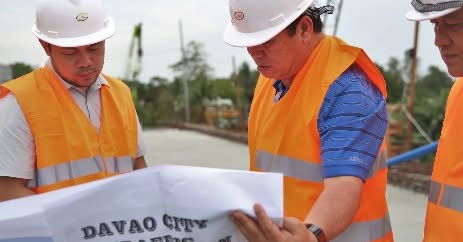The Philippines’ 2025 national budget, totaling ₱6.326 trillion, has become a focal point of national debate due to allegations of discrepancies and “blank” entries within its extensive 4,057 pages. Former President Rodrigo Duterte has been at the forefront of these claims, suggesting that the budget contains missing amounts and unfunded items, thereby questioning its validity. In response, President Ferdinand Marcos Jr. has vehemently denied these allegations, labeling them as falsehoods and emphasizing that passing a budget with blank items is impermissible.
The controversy has not been limited to the executive branch. Within the legislative branch, reactions have been mixed. Some lawmakers assert that no blank entries exist in the budget, while others claim to have identified discrepancies. The House budget panel has notably remained silent on these allegations, further fueling public speculation.
Amidst these conflicting narratives, the judiciary has yet to make a definitive statement, leaving the public uncertain. This situation underscores a significant issue: the challenges inherent in managing and scrutinizing a voluminous budget document, even with existing technological tools.
The Philippines has recognized the need for technological innovation in its budgetary processes. Since 2010, the government has envisioned an Integrated Financial Management Information System (IFMIS) to enhance financial reporting efficiency, transparency, and accountability. Various tech-driven tools have been rolled out to automate processes and harmonize account code structures, financial reports, and cash management.
Despite these efforts, challenges persist. The full implementation and integration of IFMIS across all government agencies have been gradual. In June 2023, President Marcos Jr. issued Executive Order No. 29, directing all government offices to adopt and implement an IFMIS in their transactions. This directive aims to strengthen public financial management information systems integration and streamline processes.
The absence of a fully operational and universally adopted IFMIS means that officials, including the President, must manually review thousands of pages to identify potential issues. While commendable, this manual effort is neither efficient nor sustainable. A robust digital documentation system could generate concise summaries, enabling high-level officials to focus on strategic decision-making rather than getting bogged down in minutiae.
Implementing a centralized digital platform would facilitate seamless collaboration among the executive, legislative, and judiciary branches. Such a platform would ensure that all stakeholders have access to the same information in real-time, reducing misunderstandings and fostering a culture of transparency. Moreover, it would allow for efficient tracking of budget allocations and expenditures, ensuring that funds are utilized as intended.
The current budget fiasco serves as a stark reminder of the pressing need for technological modernization within the Philippine government. By embracing the latest technology trends, many of the systemic issues plaguing the country’s governance can be addressed. However, this requires a Department of Information and Communications Technology (DICT) that is not only well-meaning but also attuned to contemporary technological advancements and the practical needs of government operations.
In conclusion, the challenges surrounding the 2025 national budget highlight a broader issue: the imperative for the Philippine government to modernize its processes through technology. By adopting integrated digital systems, the government can enhance efficiency, ensure transparency, and better serve its citizens. It is high time for the DICT to lead this charge, bridging the gap between traditional practices and modern solutions to prevent such fiascos in the future.
————————————
Rafael “Raffy” Gutierrez is a veteran Technology Trainer with over 25 years of experience in networking, systems design, and diverse computer technologies.




